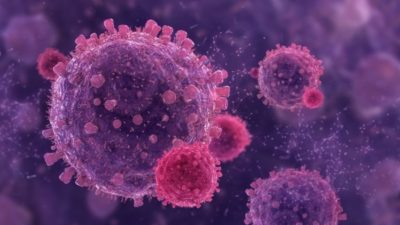| Course Credits | | 3 (3-0-6) |
| Course Abbrviation | | BIO DISEASE |
| Course Title (TH) | | ชีววิทยาของโรค |
| Course Title (EN) | | BIOLOGY OF DISEASE |
| Responsible Unit | | Faculty of Science/ Biology |
| Type of Course | | International Course |
| Semester | | Intl 2nd semester |
| Academic Year | | 2024 |
| Course Coordinator | | |
| Measurement Method | | |
| Type of Course | | Elective Course |
| Course Condition | | PRE 2303101 or 2303103 or 2303107 or 2303109 or 2303111 |
| Course Status | | |
| Instructors / staffs | | |
| Enrollment conditions | | None |
| Degree level | | Bachelor |
| Related curricular | | Bachelor of Science in Biotechnology (2562) |
| | Bachelor of Science in Biotechnology (2567) |
| Course description (TH) | | ระบบภูมิคุ้มกันของสัตว์มีกระดูกสันหลัง โรคติดเชื้อจากไวรัส แบคทีเรีย รา และ ปรสิต โรคจากสัตว์สู่คน โรคทางพันธุกรรมและความผิดปกติทางการเจริญ โรคที่เกี่ยวกับระบบเมทาบอลิซึม โรคที่เกี่ยวกับระบบประสาทและความชรา การใช้สัตว์ เป็นโมเดลในการทดลอง สัตว์มีพิษและพิษวิทยาสิ่งแวดล้อม |
| Course description (EN) | | Mammalian immune system, viral, bacterial, fungal and parasitic diseases, zoonotic diseases, genetic and developmental defects, metabolic diseases, neurodegenerative and age-associated diseases, animal models for research, poisonous animals, and environmental toxicology |
| Curriculum mapping | / | CU-1.1: Behavioral Objectives Possessing well-rounded knowledge |
| | CU-1.2: Possessing in-depth knowledge |
| | CU-2.1: Being moral and ethical |
| / | CU-2.2: Having an awareness of etiquette |
| | CU-3.1: Being able to think critically |
| | CU-3.2: Being able to think creatively |
| | CU-3.3: Having skills in problem solving |
| / | CU-4.1: Having professional skills |
| | CU-4.2: Having communication skills |
| | CU-4.3: Having skills in information technology |
| | CU-4.4: Having mathematical and statistical skills |
| | CU-4.5: Having management skills |
| | CU-5.1: Having an inquiring mind |
| | CU-5.2: Knowing how to learn |
| | CU-5.3: Having leadership qualities |
| | CU-5.4: Maintaining well-being |
| | CU-5.5: Being community-minded and possessing social responsibility |
| | CU-5.6: Sustaining Thainess in a globalized world |
| | subPLO1.1 Explain biotechnology knowledge in practice. |
| | subPLO1.2 Analyze biotechnology knowledge in practice. |
| | subPLO1.3 Apply biotechnology knowledge in practice. |
| | PLO2 Employ biotechnology-related technology and scientific tools. |
| | PLO3 Communicate effectively in English within the Biotechnology field |
| | PLO4 Demonstrate behavior that aligns with ethical principles, moral values, and professional ethics. |
| | PLO5 Demonstrate social responsibility, courage, and creativity. |
| Course learning outcome (CLO) | | 1. Explain biology and pathogenesis of diseases caused by microbial pathogens. |
| | 2. Explain biology and diseases associated with venomous animals. |
| | 3. Explain the etiology and pathogenesis of non-communicable diseases. |
| | 4. Explain the impacts of environmental pollutions on human health. |

